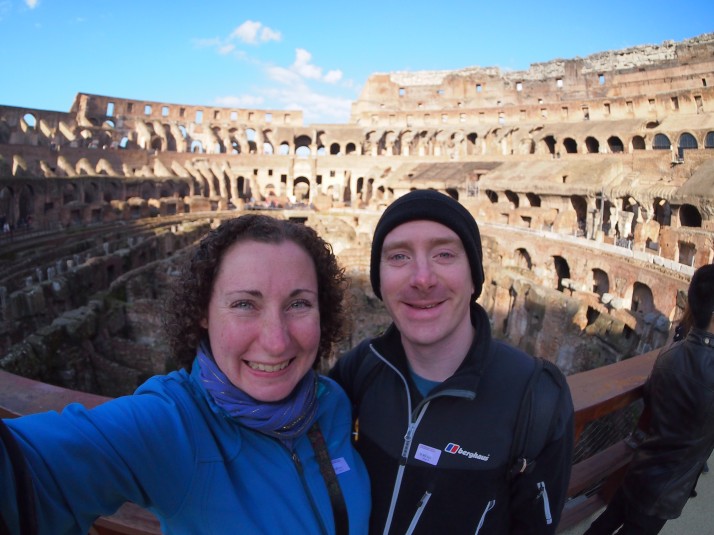We’d heard horror stories of ridiculously long queues to get into the Colosseum (1.5 hours plus is not unknown, even in low season) so we made an effort to get there for opening time at 8.30am and gave ourselves a little pat on the back as we were able to walk straight through to the ticket office. We then had just under an hour to wander around by ourselves before making our way to the meeting point for the tour that we’d booked of the underground areas and third level, areas that are not accessible to independent visitors.
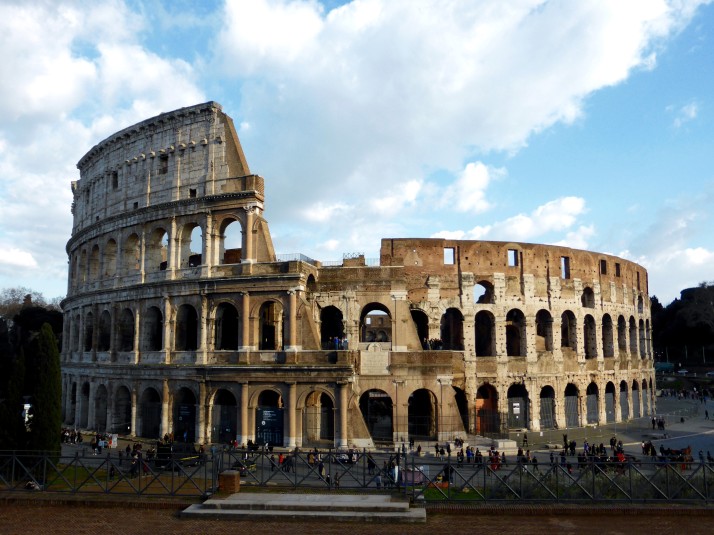 The Colosseum is a symbol of the city of Rome. Over the centuries since it fell into disuse, it has been heavily damaged by earthquakes as well as being plundered for its stone.
The Colosseum is a symbol of the city of Rome. Over the centuries since it fell into disuse, it has been heavily damaged by earthquakes as well as being plundered for its stone.
When it was inaugurated in AD80, the structure was called the Flavian Amphitheatre (after the dynasty of emperors who built it). The name Colosseum caught on in the 8th century, 200 years after the last spectacle was held there, and is thought to come from a huge statue (Colossus) of Nero which stood just outside. Historians aren’t sure when it was taken down, but only the base remains now.
Our tour began on a small area of stage which has been reconstructed at the eastern edge of the amphitheatre. During the games, the wooden stage would have been covered in sand to absorb any, ahem, blood that might be spilled. The Latin word for sand is arena and it is from this that we get the modern English word.
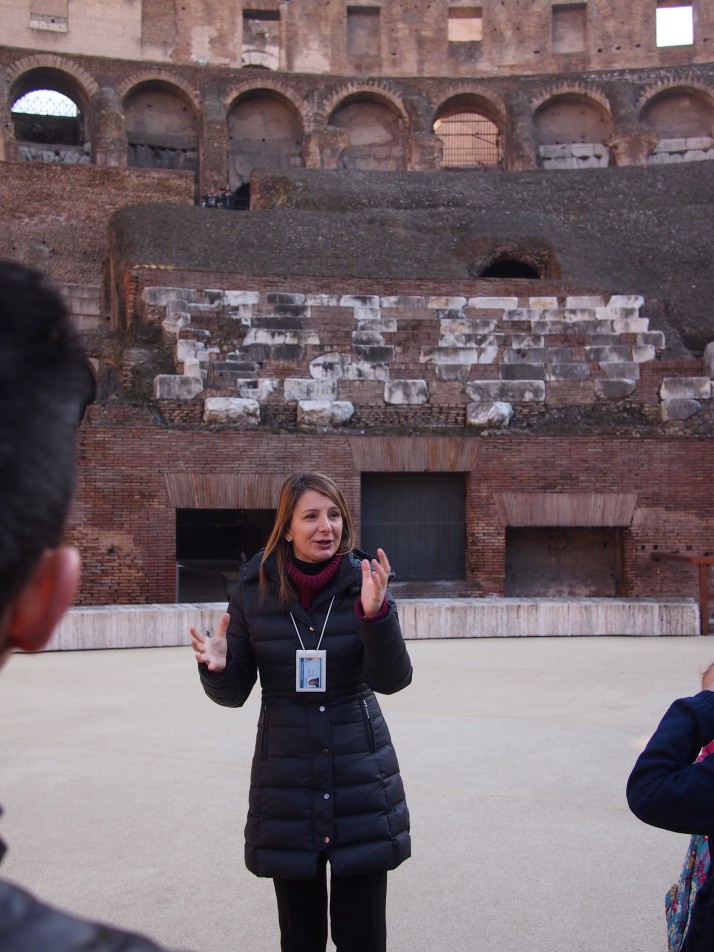 Our guide, Cristina, on the area of stage. Behind her you can see a small area of seating which has been reconstructed from fragments found around the site
Our guide, Cristina, on the area of stage. Behind her you can see a small area of seating which has been reconstructed from fragments found around the site
Unlike the theatres which we visited in Sicily, the entertainments put on in the Colosseum were not plays or music recitals but something which was a bit more of a spectacle. Entertainments lasted for several days with each day including staged animal hunts with elaborate sets and exotic beasts imported at great expense from Africa and Asia, as well as gladiatorial fights. Contrary to common belief these were usually not to the death as the gladiators were highly trained and therefore an expensive investment for their masters. In the lunch break there would have been executions…
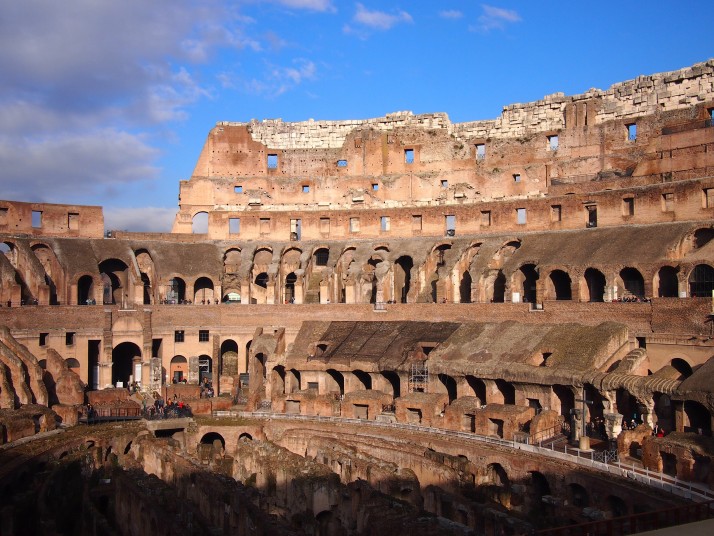 The amphitheatre had seats all the way around and entry was free for the spectators. Originally, the seating was in five different tiers, strictly segregated by social class
The amphitheatre had seats all the way around and entry was free for the spectators. Originally, the seating was in five different tiers, strictly segregated by social class
Lots of sources cite mock sea battles in the Colosseum. Cristina told us that historians aren’t sure, but if it happened it could only have been in the first couple of years before the under-stage area was completed.
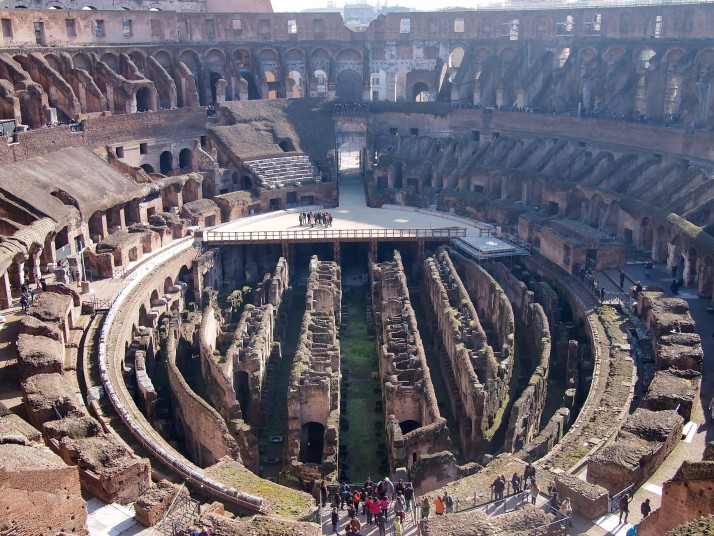 Looking down on the areas under the stage from above
Looking down on the areas under the stage from above
From the stage, we descended the stairs into the trap rooms. Nowadays these are open to the sky and clearly visible from above but in Roman times there would have been two cramped underground floors here where a small army of slaves would have been labouring to keep the show going. Working only with the light from candles and oil lamps they would have had to raise and lower the set and the participants (human and animal) through trapdoors onto the arena floor.
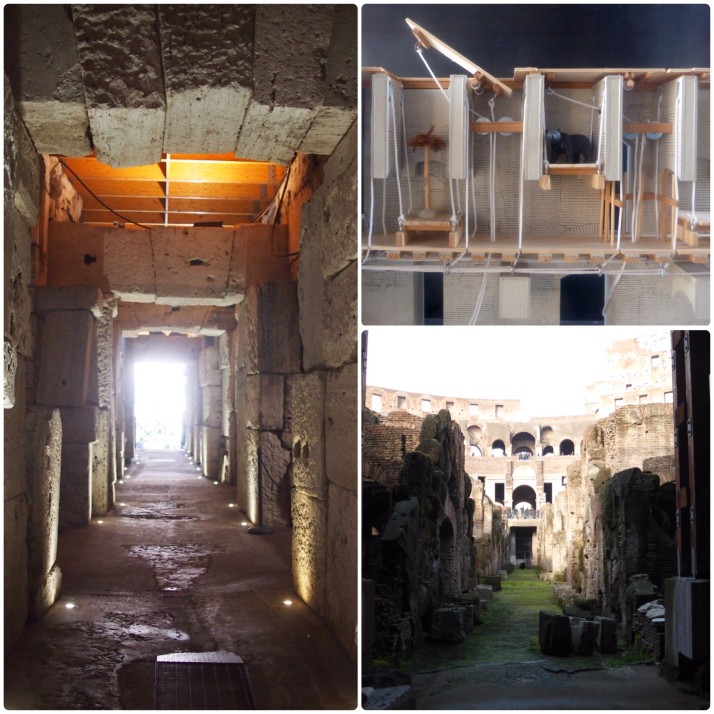 Underground details (clockwise from left): corridor leading to the under-stage area; a model showing the workings of the trapdoors for set changes and protagonist entry; looking down the central alley of the underground area – in Roman times this would have been split into two floors
Underground details (clockwise from left): corridor leading to the under-stage area; a model showing the workings of the trapdoors for set changes and protagonist entry; looking down the central alley of the underground area – in Roman times this would have been split into two floors
Looking down to the stage from the upper levels you can begin to imagine the atmosphere of the place when it was full. Historians estimate that the Colosseum might have seated between 50-80,000. To put that into context, only three of the UK’s football stadiums fall into that range (Manchester United, Arsenal and Newcastle United). Even the Beijing Olympic Stadium only had a capacity of 91,000 for the games so, even by modern standards, the Colosseum is pretty big.
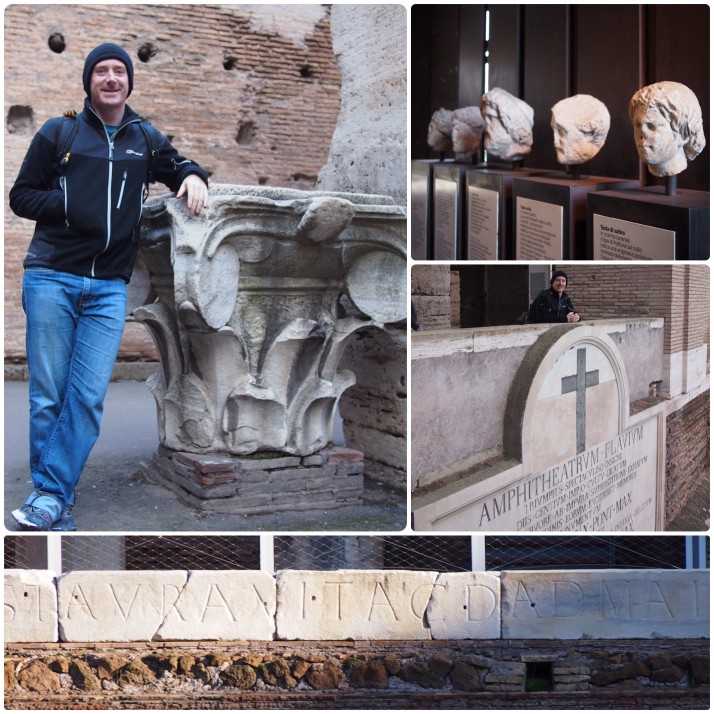 Dotted around the Colosseum are various carving fragments (clockwise from top left): Andrew with a huge column capital; a display of stone heads on the second level; exterior sign with the original name – Flavian Amphitheatre; there was a row of carved inscriptions around the stage – we don’t know what they say but think that they might be the Roman equivalent of advertising hoardings…
Dotted around the Colosseum are various carving fragments (clockwise from top left): Andrew with a huge column capital; a display of stone heads on the second level; exterior sign with the original name – Flavian Amphitheatre; there was a row of carved inscriptions around the stage – we don’t know what they say but think that they might be the Roman equivalent of advertising hoardings…
We’d highly recommend the tour to get access to some restricted areas as well as a really good explanation of the history. Our guide was excellent, despite arriving 5 minutes late and rushing us off at high speed, she spoke slowly and clearly (in our experience Italian guides usually speak at double speed), allowed plenty of time for everyone to take photographs before moving on and was happy and able to answer any questions thrown at her.
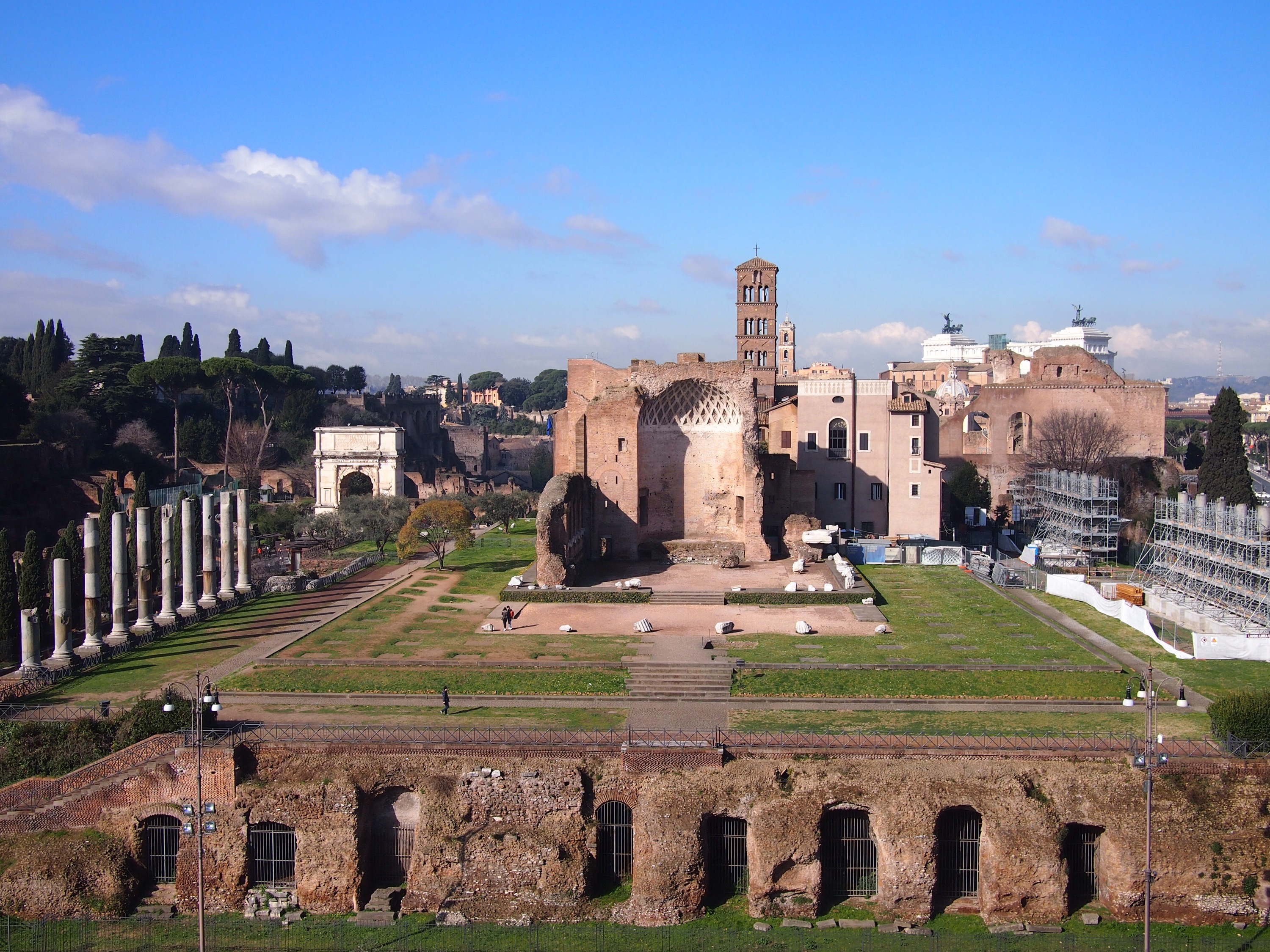 From the third level of the Colosseum we could see the eastern end of the Roman Forum
From the third level of the Colosseum we could see the eastern end of the Roman Forum
Of course we knew about the Colosseum before we got to Rome, but the Roman Forum and Palatine Hill? Umm, nope. They’re all included on the same ticket and not even the world’s slowest tourists (that’s us!) can spin the Colosseum out into a full day of sightseeing so we wandered across the street to the centre of Ancient Rome.
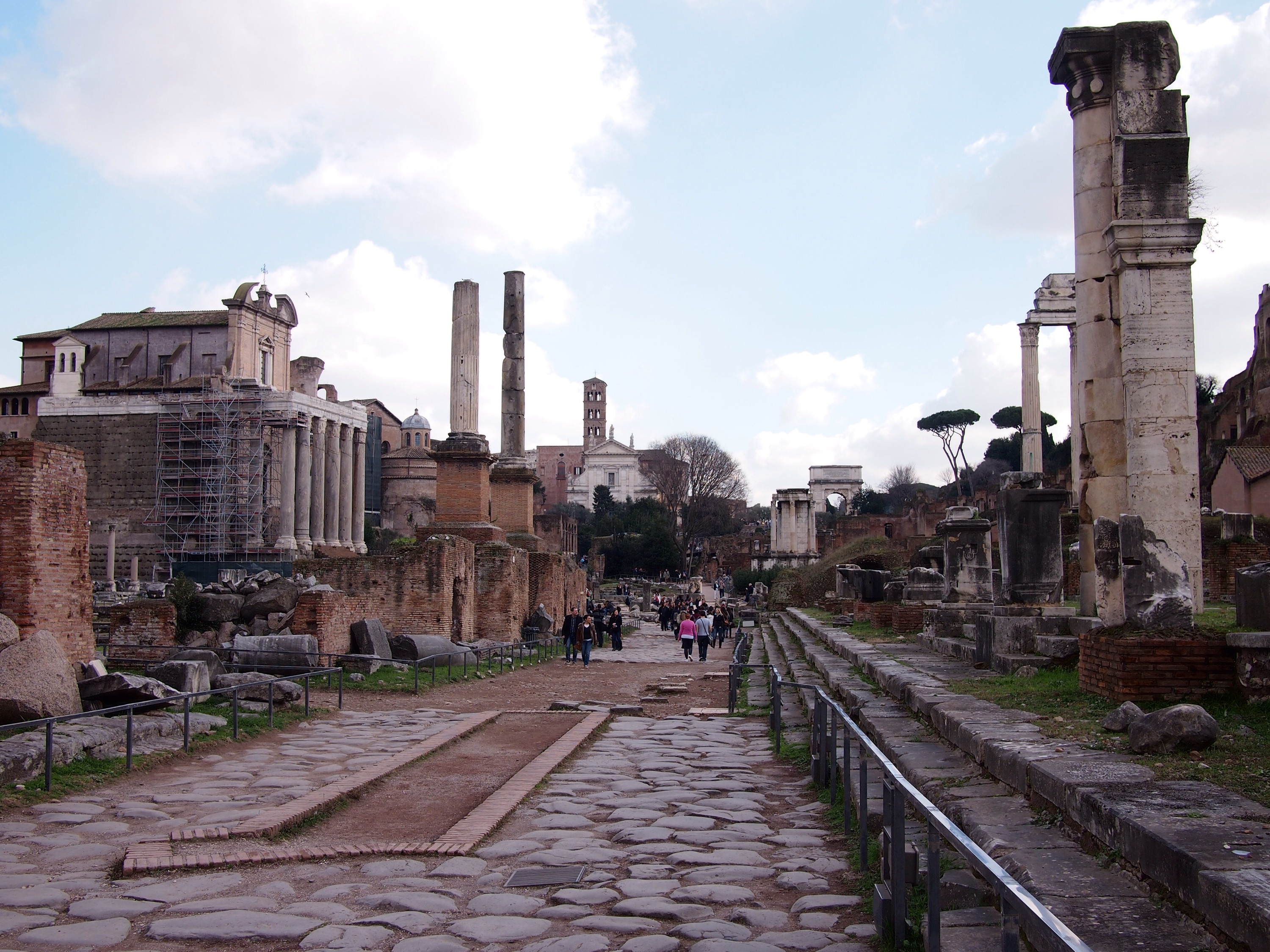 The Via Sacra was Rome’s main street and ran through the middle of the Roman Forum
The Via Sacra was Rome’s main street and ran through the middle of the Roman Forum
 At the eastern entrance to the Roman Forum, the first structure we came across was the Arch of Titus, erected to commemorate the sacking of Jerusalem in 70 AD
At the eastern entrance to the Roman Forum, the first structure we came across was the Arch of Titus, erected to commemorate the sacking of Jerusalem in 70 AD
The Roman Forum nestles in the valley which stretches to the north-west from the Colosseum and contains the ruins of the power centre of the ancient city, all manner of public buildings including temples, basilicas (large open buildings used as courts or meeting places) and the Senate building. To our untrained eyes it initially looked like a jumble of column fragments, semi-complete buildings and bits of marble, but armed with a map and some information about key structures we soon began to make sense of it and were in awe of the scale of the structures.
 The largest building in the Forum was the Basilica of Constantine, these mighty arches were mere side niches
The largest building in the Forum was the Basilica of Constantine, these mighty arches were mere side niches
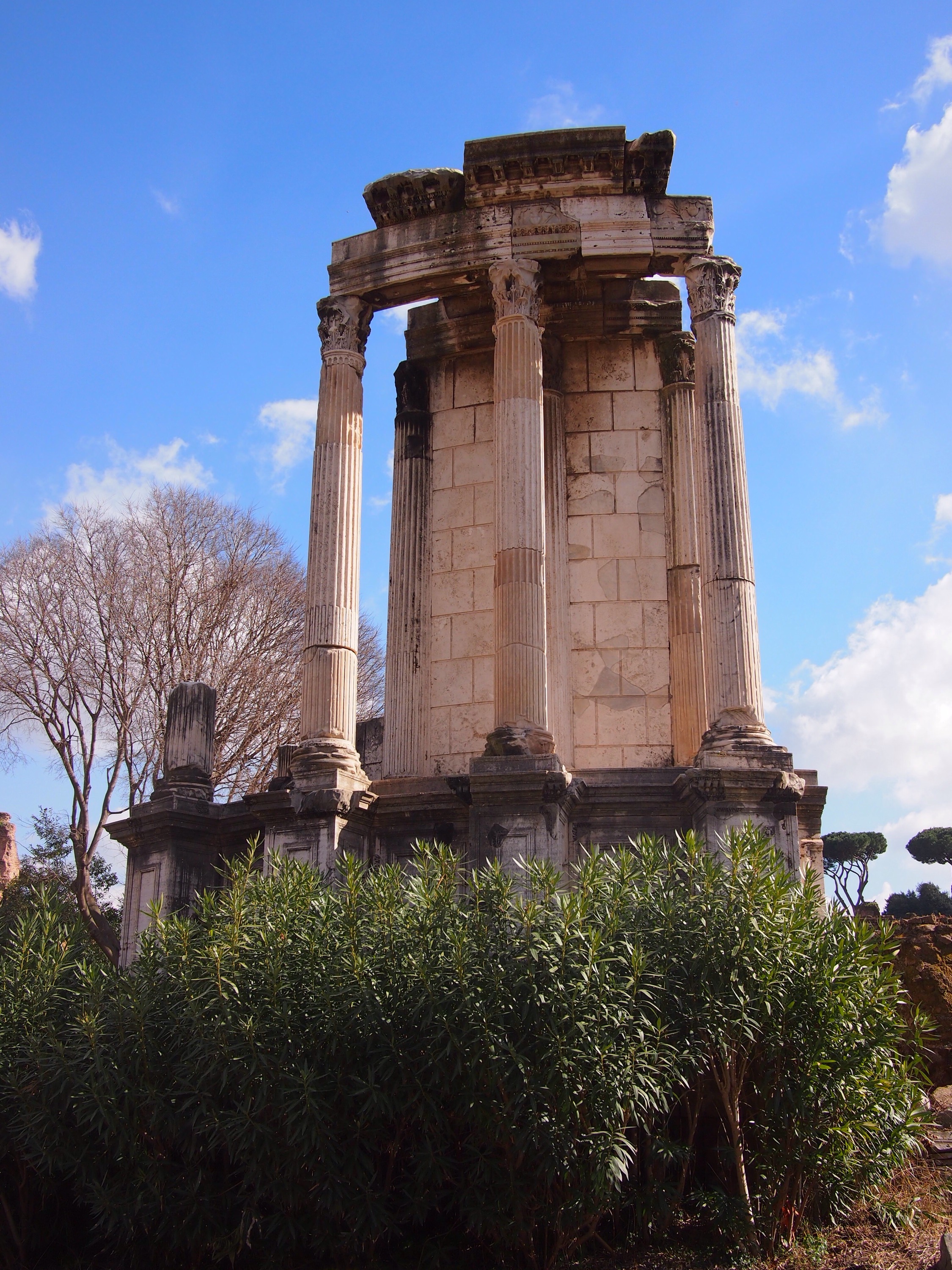 One of the many temples, the Temple of Vesta, where the sacred flame of Rome was tended by six priestesses, the Vestal virgins
One of the many temples, the Temple of Vesta, where the sacred flame of Rome was tended by six priestesses, the Vestal virgins
The Palatine Hill stands to the south of the Forum and, according to legend, is where Romulus and Remus were found and cared for by a she-wolf in her cave before going on to found the city. It is one of the most ancient areas of the city and during both the Republic and the Empire is where the aristocracy lived, so most of what is visible today is palace ruins. One of the interesting features of the hill are the brick arches that surround it. These came about when Rome’s wealthy ran out of hilltop to build in this prestigious neighbourhood and so created more ground by extending outwards!
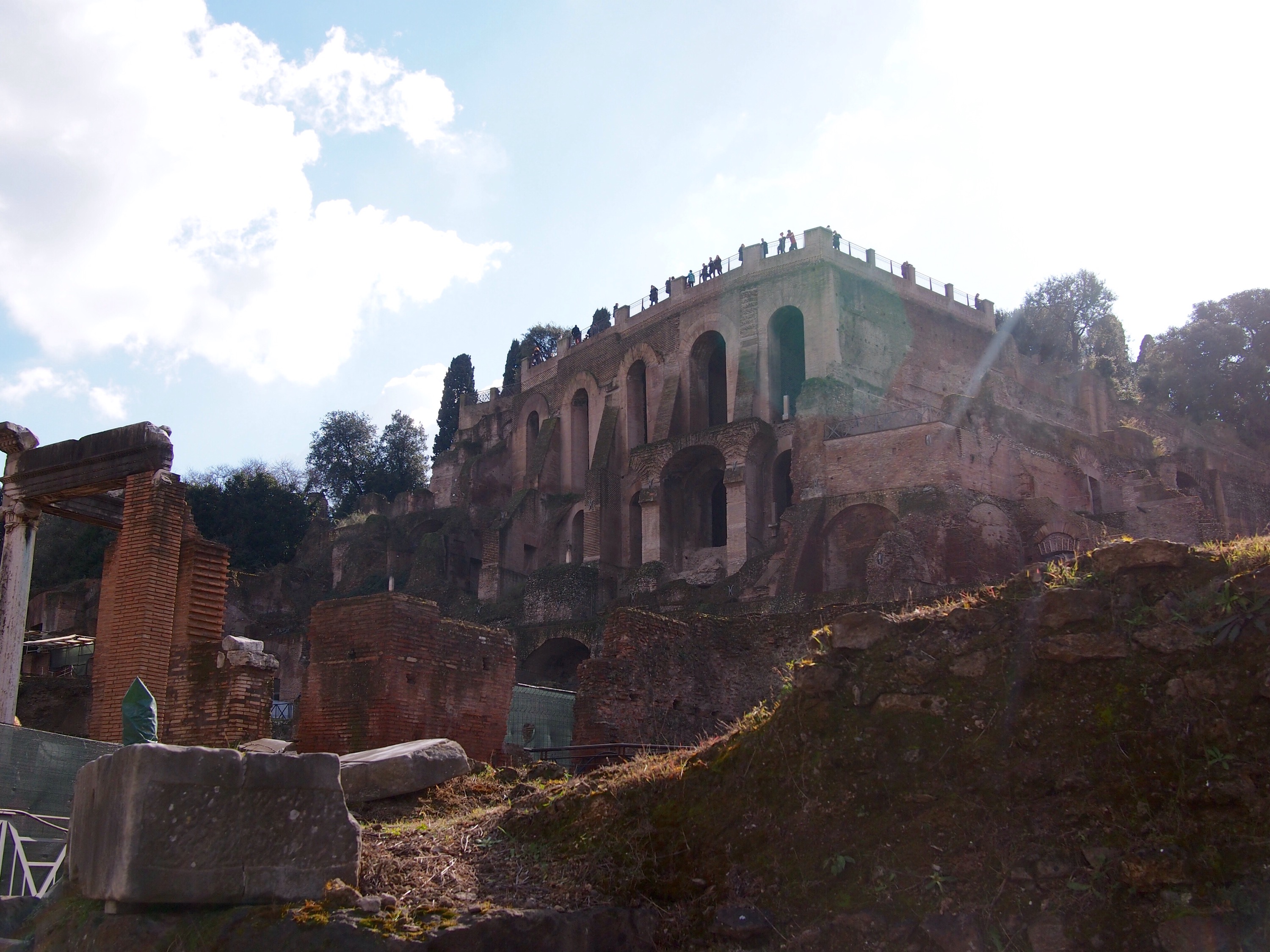 Brick arches surround the Palatine Hill
Brick arches surround the Palatine Hill
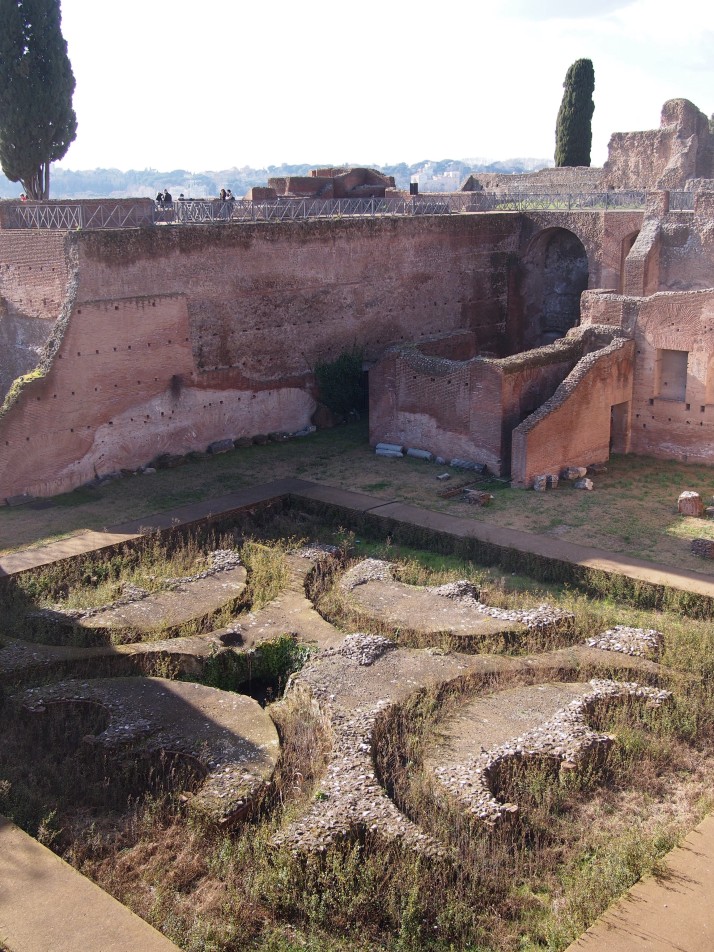 Ruins of Domus Augustana on Palatine Hill
Ruins of Domus Augustana on Palatine Hill
Overall, we found the Palatine Hill less interesting than the Forum, the area is larger and the remains seemed less impressive. Or maybe we were just getting tired. That said it was definitely worth the short climb for the incredible views. To the south, we could see down to the former Circus Maximus, Rome’s largest chariot racing track, now just a field whose outline is all that remains. From the other side, the view was across the whole of the Forum and Colosseum.
 A panoramic view over the Roman Forum from the Palatine Hill, the Colosseum is to the right of the photograph
A panoramic view over the Roman Forum from the Palatine Hill, the Colosseum is to the right of the photograph

 two year trip
two year trip